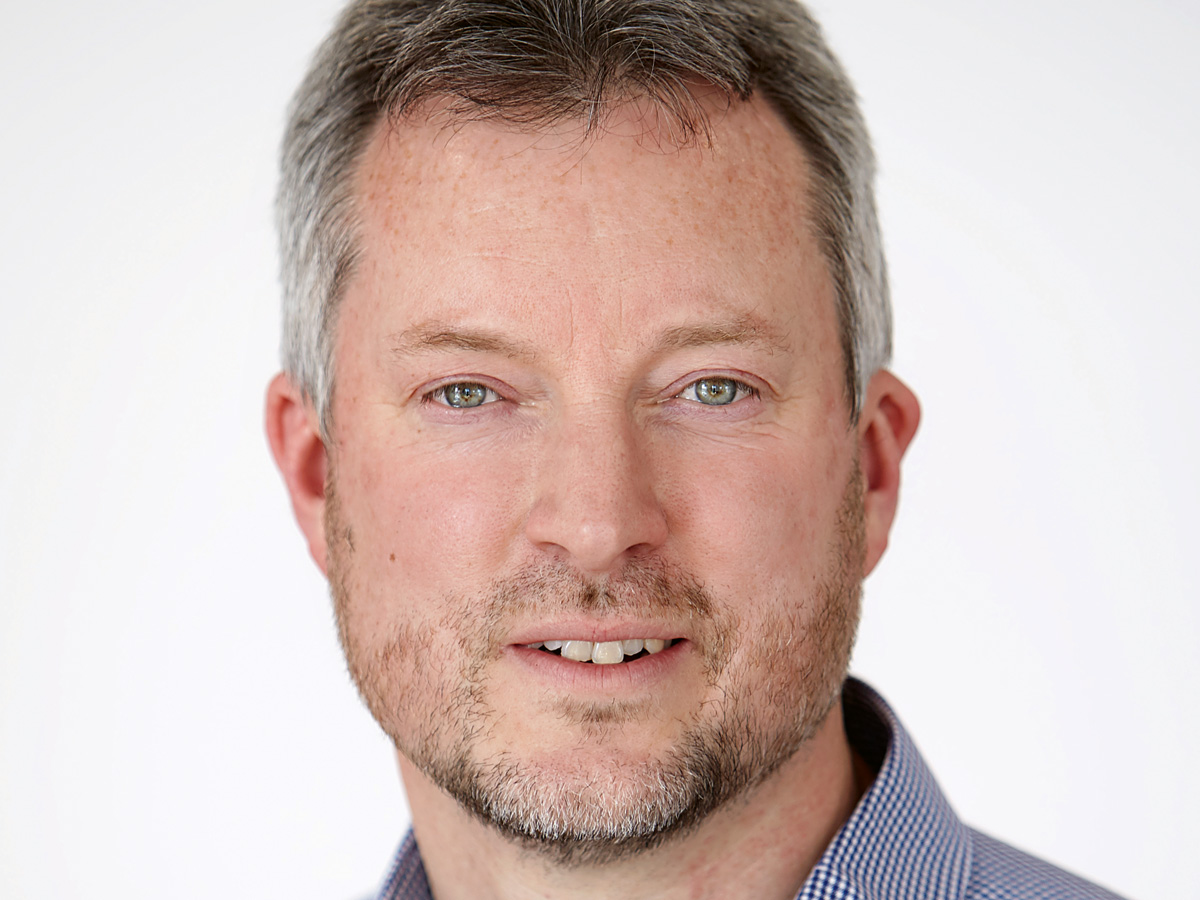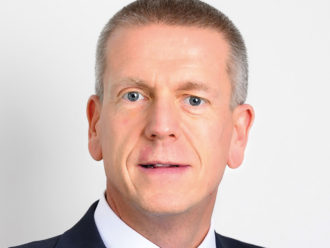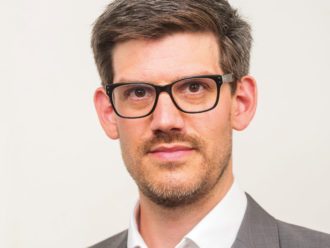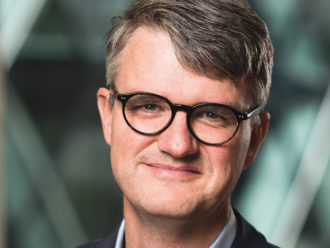You are working to provide long-term stability and liquidity to finance the charity’s work, while maintaining the real value of the endowment. How does that translate into an investment approach?
Our target is UK inflation + 4%, which is more challenging now than it was a few years ago. We preserve the real value of the endowment and spend the 4% on grants – around £40m to £50m a year at present. It’s a challenging target and it would be much more difficult if we didn’t have an allocation to illiquid investments.
Our long-term time horizon means we can lock up a proportion of our money for 10 years plus, the aim being to earn an illiquidity premium. That has been a key part of our investment strategy. The proportion of illiquid investments has risen steadily over the last 10 years. It is now about a third of the endowment.
Alongside that, we focus on cashflows. We are less bothered about short-term fluctuations, certainly month-on-month, and even year-on-year.
We do a lot of stress testing on cashflows because of the illiquid part of our portfolio. Regardless of where the market goes in the short term, we try to stay focused on the long-term picture.
How then does your asset allocation breakdown?
We have approximately 35% in private equity, biased towards venture capital and growth funds – many based in the US. A third of the portfolio is in global equity funds. Around 15% is in hedge funds, with the rest in cash and a small amount in fixed income.
Cash for us is slightly higher than it would normally be, around 9%, because valuations have been relatively high. We hope those will come down, and then we can find more opportunities.
What do you have an allocation to instead of fixed income?
We wanted something that could diversify our equity holdings, and in normal circumstances that would be bonds. Instead, we have an allocation to hedge funds. Some are long-short strategies, some have market exposure with managers we like. That allocation, as I mentioned, is about 15%.
You are a long-term investor, but willing, where necessary, to not follow the crowd. How is that reflected in your investments?
We do not mind complex strategies. We have the operational resources to deal with them. The illiquid portion of the portfolio makes us look a lot more like a US foundation than a UK charity, while we do not have much in property.
The portfolio’s turnover is also pretty low. There are plenty of managers that have been in the portfolio for more than five years, some longer than 10 years.
That makes us slightly different from the crowd.
Are you, therefore, looking to replicate the US foundation model?
Yes. We work with an investment adviser – Cambridge Associates – which has a network of analysts around the world who help us find funds. They have a history of working alongside endowments who are able to manage complex portfolios and allocations, particularly to illiquid holdings.
That said, we do not want to have an overly complex portfolio. So it is a constant challenge to make sure we have the exposure in the right places.
What is the thinking behind wanting to take advantage of the additional returns from complex or illiquid strategies?
We do, as I say, have a bias towards venture capital, which is high risk. This is investing in start-ups. We are essentially interested in backing innovation. Regardless of what public markets do, good businesses get created at all points across the cycle. We are looking for exposure to innovation, entrepreneurs and, ultimately, job creation. We are hoping to back good businesses at an early stage and watch them grow. This approach has driven our returns over time.
Which companies have you backed?
We started a private portfolio more than 10 years ago, and companies such as Fitbit and Peloton have gone from being small start-ups, through their growth stage to the public markets. We usually exit at this point and we recycle the money back into the next level of innovation.
Where is the next level of innovation?
The green transition offers a great deal of opportunity. There is a lot to be pessimistic about if you look at the environmental statistics. But economies are changing at a fast pace and history teaches us that disruption and innovation, although they are typically bad for incumbents, generally throw up big opportunities for the start-ups and disruptors.
Your portfolio returned 31.1% in 2021, beating the 11.8% target. What is behind this success?
Private equity was the main driver. This is an area where we have spent a number of years developing relationships. This has included some travel to the west coast of the US and to China. Our advisers have an analyst network around the world and we work with them to find the best funds.
Has there been a time when they were not as successful?
There was a period coming out of the financial crisis when markets moved up quite strongly and our portfolio didn’t keep up. We were low risk, cautious and with high levels of cash. We were concerned that the recovery wasn’t sustainable.
After the underperformance, we took a step back. We asked what our strengths are and where they lie. The conclusion was that big balanced funds, with a mixture of equities, bonds and cash, had been problematic and we wanted exposure to funds with a more specialised focus. Funds with a smaller number of holdings – 20 or 30 stocks focused on alpha generation.
So each manager had a specific target within the portfolio. We also took a view to always be fully invested, which has not always been the case.
How does your approach to ESG align with your mission as a charity?
There are various strands to it. We are, for example, supporters of organisations like ShareAction, which work to improve the financial system.
Then within our investment portfolio, we joined the United Nations Principles for Responsible Investment (UNPRI) in about 2013 – and that has prompted many conversations. But engagement is key here.
We work with Cambridge Associates to engage managers with questions like: do they have net-zero policies? What is their approach to particular stocks that have certain environmental, social and govern- mental challenges?
And we invest in positive climate solutions and funds with good approaches to diversity, equity and inclusion. It has been about making steady improvements year-on-year on all these issues.
How are you going to meet your commitment to make your portfolio net zero by 2040?
We are starting from a low base. The nature of our portfolio and the companies we like means we don’t have much expo- sure to businesses that have high emissions. But our first task has been contacting our managers and explaining our approach and asking them if they have a net-zero strategy.
And we are also looking at how we translate all this to impact in the real world. Collaboration with other investors is something we are looking at.
And as well as making grants, we also have a social investment fund and an impact fund. There are various ways we can make a difference and the boundaries between impact and social investing are likely to blur over the coming years.
What benefits does being a signatory of the UNPRI bring to your foundation?
The biggest benefit it has brought to us is to prompt conversations internally about how can we use the endowment in line with our mission.
The UNPRI has its detractors. Organisations fill in their returns and there has been no obligation to audit them. But the requirements have been made slightly more robust and there has certainly been an increase in considerations of ESG and responsible investing policies. It is then down to asset owners, for example, investing into funds, to find out if these policies are backed up by action.
How do your £40m social investment fund and a £10m allocation to impact investing work?
With our social investment fund, we focus on impact first and then aim to get our money back. The impact fund is one where we treat financial return and impact equally.
The investments in this latter fund will likely include leaders in measuring impact. We have worked with the Impact Investing Institute for a while now and establishing a dedicated fund was a natural progression of some of that work.
Also, this is part of a bigger trend, because over the next 5 to 10 years managing capital is not going to be just about financial return; it is going to be about impact.
The plan is to invest more of your portfolio in impact, then?
It is early days but looking at trends in the market, we think the opportunities in that area are only going to increase.
You were a founding member of the Charity Responsible Investment Network. What is the idea behind that?
It is a network for relatively large UK foundations to discuss responsible investing. It is about idea exchange, discussing trends and looking at engagement opportunities. This has led to, for example, an initiative asking banks to disclose their climate targets.
How does being a charity differ from other forms of institutional investment?
Charitable endowments often have the advantage of being genuinely long-term investors. We are guardians of the endowment for future generations. We also have fewer stakeholders than some organisations, so it is incumbent on us to make sure we are moving in the right direction.
Are asset managers up to the task of managing charity money?
It is a competitive market. But when you look at it from a responsible investment perspective, the percentage of those genuinely doing it – rather than saying they are doing it – is low. Well below 50%.
There is a lot of greenwashing out there. The challenge for us is to identify, the asset managers who can work within the remit of our portfolio. But this situation is improving steadily.
How can we get rid of greenwashing?
We are working on getting full disclosure from managers who do not provide it. Disclosure is a starting point.
The next priority is for investors to challenge managers with questions based on that. For example, sometimes it can be as simple as picking out an individual stock within a fund and saying: “This looks inconsistent with your policy.”
Another is to ask: how involved are the senior people within the organisation in the responsible and ESG investments? That is an indicator of the organisation’s commitment to ESG.
What has been the biggest lesson you have learned since you joined the foundation nine years ago?
Ignore the noise and trust your own judgement.
What has been the biggest challenge you have faced in this role?
Money should be deployed to make a difference. Focusing on high returns and ignoring externalities is not a sustainable strategy longer term.
So when you come up against the opposite view, it always surprises me and can be a challenge. Focusing only on the short term – over one or two years – can be counterproductive. It is important to stay focused on sustainability further out and, as I say, do not get distracted by the noise. It comes back to first principles.
Although you are a long-term investor, does the uncertain economic outlook worry you?
We will stay fully invested. We may make some changes in the portfolio, but they will be on the edges. We have not held fixed income in any material level for a number of years. But that may now becoming more interesting again. But for us, it is all about being invested through the cycle.
MATTHEW COX’S CV
August 2013 – present
Esmée Fairbairn Foundation, investment director
March 2012 – July 2013
Julius Baer International, head of investment
July 2010 – March 2012
SG Hambros, equities specialist
1999 – 2010
UBS Asset Management, portfolio manager





Comments